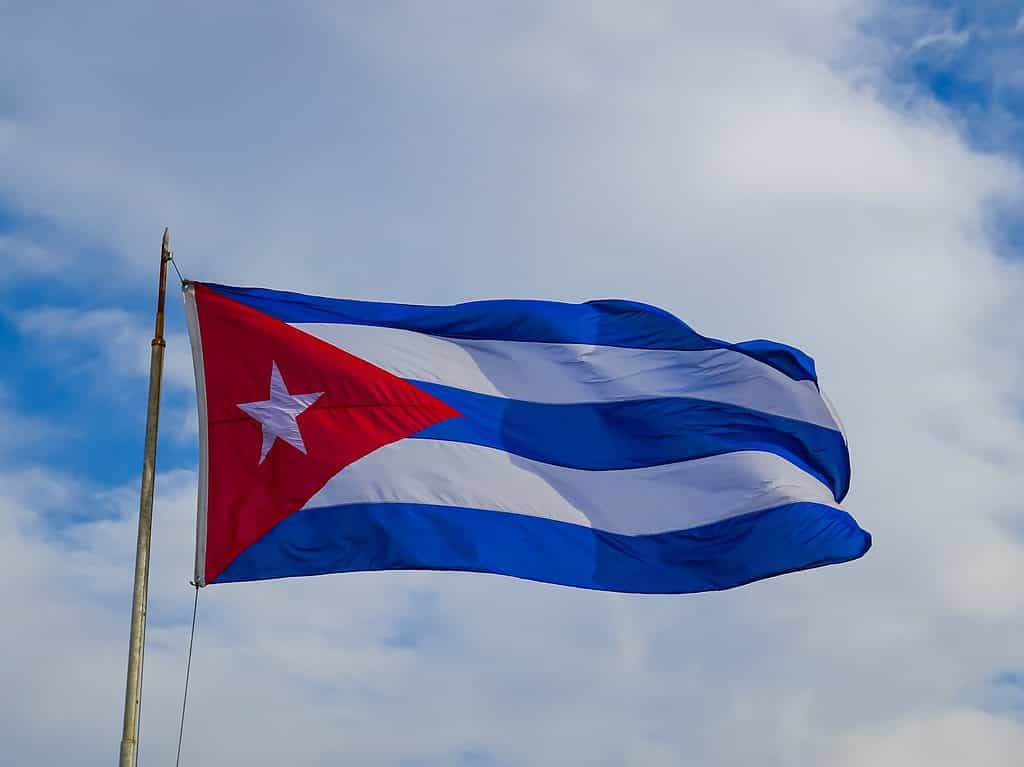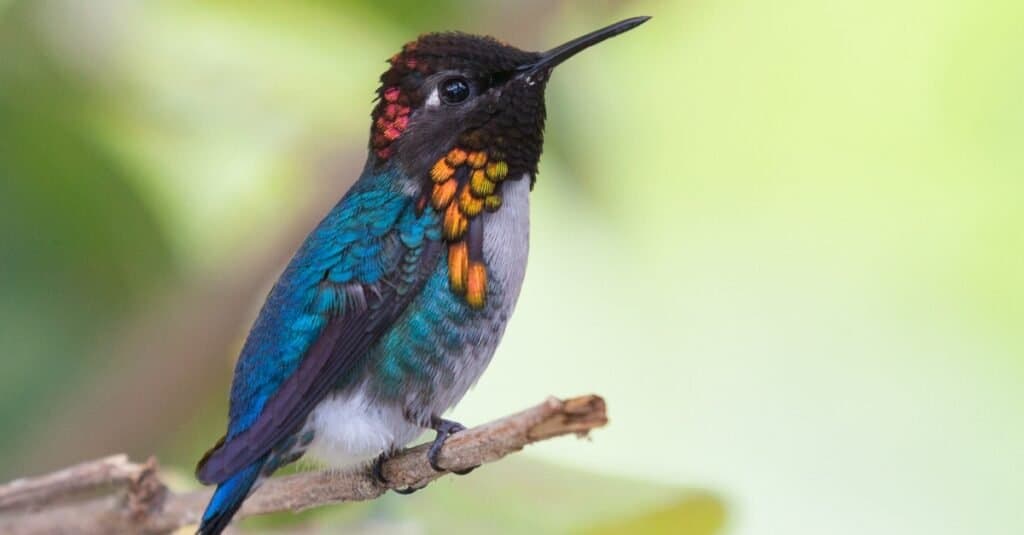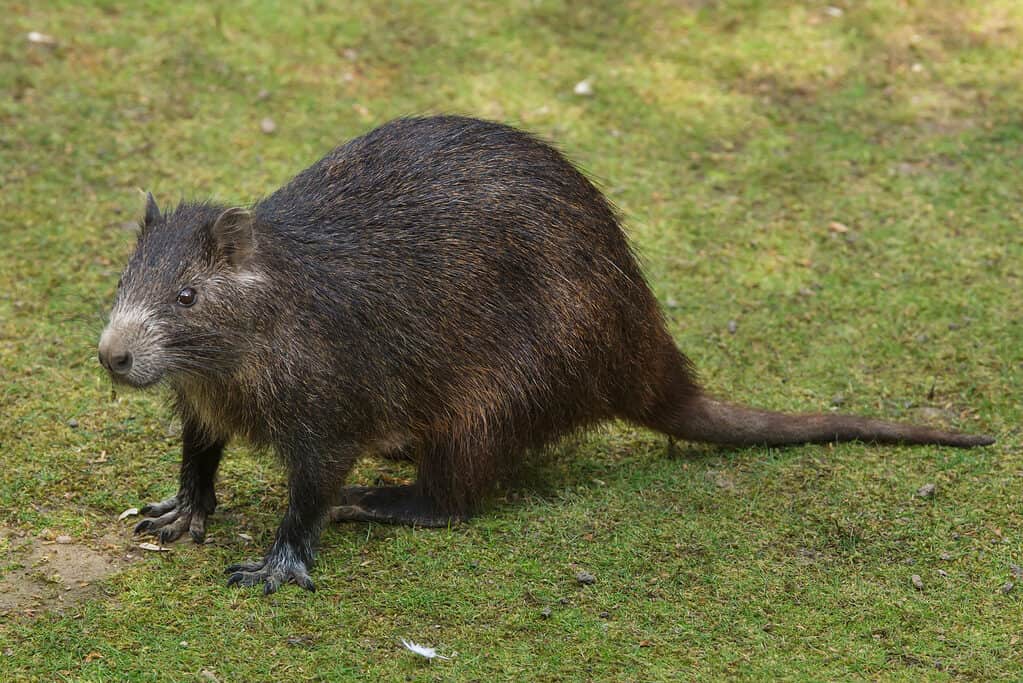Cuba is just south of Florida, a little over a hundred miles off the coast of Key West. Cuba is an island nation with a wide variety of ecoregions. There are 3,500 miles of coastline with borders on the Caribbean Sea, Gulf of Mexico and the Atlantic Ocean. You can imagine the diverse animal and bird species that inhabit Cuba, but when you see the national bird, you will clearly understand why it was chosen. Read on to find out all about the national bird of Cuba!
What is the National Bird of Cuba?
The national bird of Cuba is the Cuban trogon. The only place in the world where you will find the Cuban trogon is in Cuba. These beautiful birds are a fitting patriotic symbol being red, white and blue. The colors of the Cuban flag are also red, white and blue making the Cuban trogon a perfect representative. Cuban trogons have a blue head and back with a white breast and red feathers on their lower body. It has long, scalloped tail feathers that are blueish green on the top and white underneath. Another name for the Cuban Trogon is the tocororo and the scientific name is (Priotelus temnurus).

©FotoRequest/Shutterstock.com
Why is the Cuban Trogon the National Bird of Cuba?
There are several reasons why the Cuban trogon was chosen as the national bird of Cuba. First the colors of the Cuban trogon, red, white and blue, are the same as the national colors of Cuba. It looks as if the bird was attending a sporting event and painted itself to cheer on its team. Secondly, the Cuban trogon is endemic to Cuba, meaning it can only be found in Cuba. Thirdly, the Cuban trogon cannot survive in captivity which the Cuban people relate to their pride in their freedom.
Is the Cuban Trogon Featured on the Cuban Flag, Coat of Arms or Currency?
No. The Cuban trogon is not featured on the flag, coat of arms or currency. There are not any animals represented on these symbols of Cuba. The flag of Cuba has five equal horizontal stripes that are alternating blue/white. A red triangle is on the hoist side of the flag has a white star centered in it. The white star in the center of the triangle represents independence. Although the Cuban trogon is not featured on the flag the reference to its red, white and blue coloration are often compared to the colors of the flag.
The coat of arms of Cuba has a shield surrounded by an oak branch with each section of the shield showing a different scene. The top section has a rising sun over the sea with the two Americas on either side and a golden key in the middle with Cuba being the “Key to the Gulf”. The royal palm tree is in the lower right hand corner of the shield and the lower left has the three blue stripes and two white stripes. The currency of Cuba has prominent people from Cuban history, not the national bird.

©Giongi63/Shutterstock.com
Is the Cuban Trogon an Endangered Species?
No. The Cuban trogon is not an endangered species. It is listed as a species of “Least Concern” by the IUCN. The Cuban trogon was last assessed in August of 2018 at which time it was found in forests and shrublands and was considered “common”. They are not migratory birds and can be found on the mainland of Cuba as well as on the Isle of Pines.
What Other Birds are Found in Cuba?
Other birds that can be found in Cuba include the tiniest bird in the world, the bee hummingbird. Can you believe the bee hummingbird is only 2.5 inches long from head to tail? The Cuban tody is another bird that is endemic to Cuba with fluffy feathers that are bright green yellow and sky blue. Other birds in Cuba are the yellow-headed warbler, Cuban solitaire, blue-headed quail dove, giant kingbird and the Cuban pygmy owl.
On the coasts of Cuba you will find both resident and migratory birds. It is very common to see gulls and kittiwakes (look like gulls). There are also northern gannet, red-footed booby, cormorants, loons, terns and pelicans. Brown pelicans are the coastal pelicans that can be seen make epic dives into the ocean to scoop up fish in its large hamper-like beak. You might be surprised to learn that brown pelicans can get to be 3-4 feet long! These are good sized birds.

©iStock.com/epantha
What other Animals Live in Cuba?
Other animals that live in Cuba are the Cuban ground iguana, treefrog and crocodile. There are the fascinating spinner dolphins that can be seen offshore leaping out of the water and spinning up to seven times before splashing back into the water. You may also spot the slow-moving manatees off the coast. Have you ever seen a 15 foot long snake? Cuba has one species, the Cuban boa that can reach lengths of 15 feet or more.
What is the National Animal of Cuba?
The national animal of Cuba is the Cuban hutia. This giant rodent also goes by the name Desmarest’s hutia. Despite automatically thinking it might be a big rat, it actually looks more like a beaver without the wide flat tail. Cuban hutia’s can get to be almost 19 pounds, but much smaller than the average beaver which is around 35-65 pounds.

©iStock.com/wrangel
Is the National Animal of Cuba Endangered?
No. The Desmarest’s hutia is listed as a species of “Least Concern” by the IUCN being last assessed in June 2008. They can be found in the dense forests of Cuba and can be found climbing around in trees or waddling around on the ground in search of food like bark, leaves, insects, fruit and small animals. They are considered to have a stable population with no immediate threats to survival. A hardy animal suitable to represent its country well!
Up Next
- The Flag of Cuba: History, Meaning and Symbolism
- Types of Tropical Birds
- Are Capybaras the Biggest Rodents in the World
The post Cuban Trogon: The National Bird of Cuba appeared first on AZ Animals.
from Animal News, Facts, Rankings, and More! - AZ Animals https://ift.tt/rjIFv4W